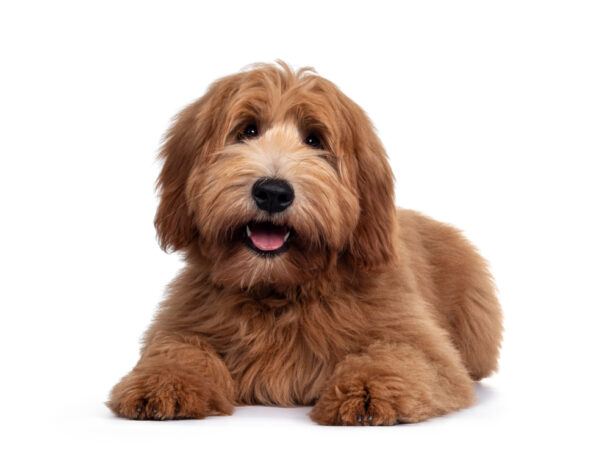LifeWithMyDogs is supported by our audience. When you purchase through one of our links, we may earn a small affiliate commission. As an Amazon Associate I earn from qualifying purchases. Your cost is not affected.
**********
Anyone who owns a long-haired dog knows the struggle of dealing with matted fur. It’s not only unsightly but also uncomfortable for our furry friends. Don’t worry. We’ve got you covered! This comprehensive guide will dive into everything you need about grooming and preventing matted dog hair.
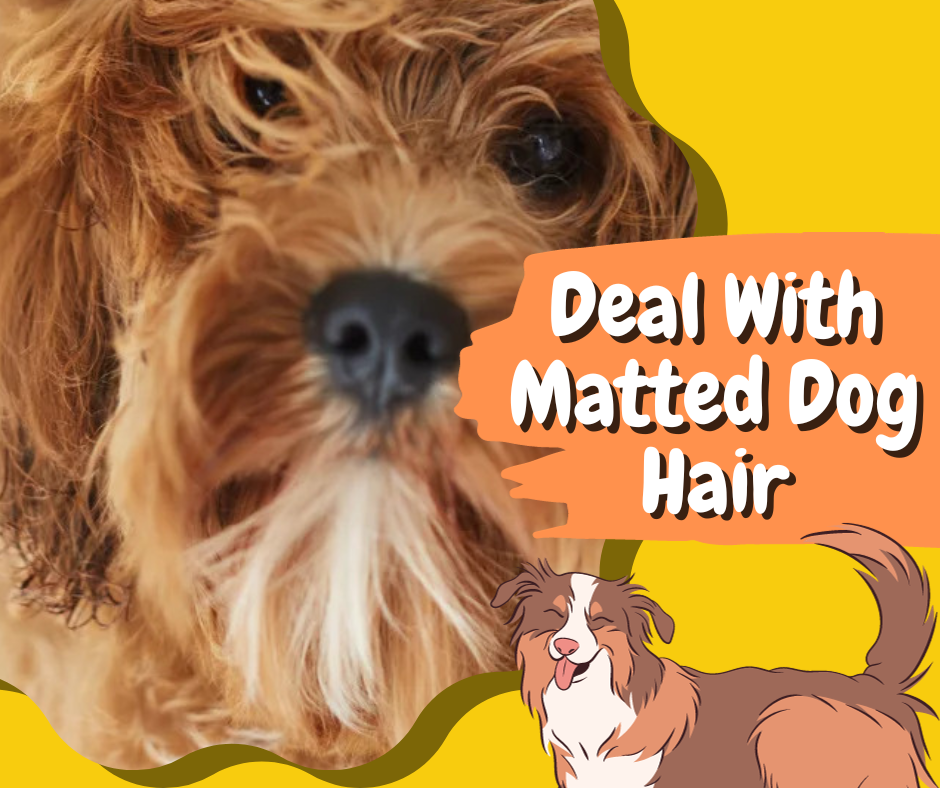
From understanding the causes of matted fur to identifying high-risk breeds, we’ll explore the tools and techniques to effectively remove mats and keep your dog’s coat looking fabulous. Get ready to become an expert in grooming and maintaining a healthy, mat-free coat for your beloved pup.
Understanding Matted Dog Hair
Matted dog hair is more than just an aesthetic issue; it can lead to discomfort and even health problems for your pet. Mats and tangles in your dog’s hair occur when individual hairs twist together, forming dense clumps that pull on the skin. This can be especially problematic for long-haired dogs with silky or curly coats. Over time, these clumps can become painful sores, trap moisture, and harbor bacteria, leading to skin irritations and infections in the dog’s fur.

Mats often start in areas where your dog’s hair rubs together, such as behind the ears and under the collar. Preventing this issue requires regular grooming and knowledge of gently brushing your dog’s coat without causing discomfort or exacerbating tangling. With proper care and the right tools, you can maintain a healthy coat for your furry friend and help them stay comfortable and mat-free.
Identifying High-Risk Breeds for Matting
Some dog breeds that are more prone to matting due to their coat type include:
- Poodles
- Doodle-mixes
- Coton de Tulear
- Bichon Frisés
These breeds have loose fur and are at a higher risk of developing mats and tangles in their dog fur coats. Also, rough-coat Collies and Cocker Spaniels, which have long, fine fur, can easily tangle if not groomed regularly.

Certain breeds, like Puli, Bergamasco Shepherd, and Komondor, are known for their unique corded coats resembling dreadlocks or cords. These corded coats were initially used to help disguise the dogs while they guarded and herded livestock. Maintaining them requires special grooming tools and techniques, such as:
- Using dog clippers
- Regularly separating and matting the cords
- Regularly bathing and drying the cords
- Regularly checking for and removing debris or foreign objects from the cords
Proper care and grooming of double and corded coats is essential to keep them healthy and looking their best. Recognition of high-risk breeds and comprehension of their grooming requirements are key factors in mat prevention and coat health maintenance.
Grooming Tools for Tackling Matted Hair
The right tools can make all the difference when dealing with matted fur. In the following sections, we’ll explore the benefits of detangling sprays, brushes, and clippers for effectively removing matted hair and maintaining a healthy, tangle-free coat for your dog.

Detangling Sprays: Benefits and Best Picks
Detangling sprays are a fantastic addition to your dog grooming toolkit. They help to loosen and soften matted hair, making it easier to brush out, especially for breeds like rough-coat Collies. When choosing a detangling spray for your dog, check the ingredients for potential allergens and select a product specifically made for dogs to avoid skin irritation or allergic reactions.
One of the best detangling sprays on the market is SKOUT’S HONOR Probiotic Daily-Use Spray. This spray helps untangle mats and promotes a healthy coat and skin by supporting the natural balance of your dog’s skin microbiome.
Remember, always use a soft bristle brush when brushing out the matted fur to avoid causing any pain to your pup.
Clippers vs. Scissors: Which is Better?
Both clippers and scissors play a role in removing matted hair, but each has pros and cons. Clippers are great for taking off big mats and are generally safer to use, as they help avoid nicks and cuts. However, avoid turning the clippers on their end for a closer shave, which may irritate the skin.
On the other hand, scissors can be helpful for smaller mats and trimming the face and paws, but they come with a higher risk of accidental cuts and nicks. Overall, grooming clippers are usually the safer and more practical option for matted hair.
Whichever tool you choose, always be cautious and gentle when removing mats to ensure your dog’s comfort and safety.
The Importance of Regular Brushing
Regular brushing is crucial to maintaining a healthy coat and preventing matting in your dog’s fur. Consistent brushing helps remove dirt, debris, and loose hair that can contribute to tangles and mats. The brushing frequency depends on your dog’s coat type, and using the appropriate brush, like a slicker brush or an undercoat rake, is essential.
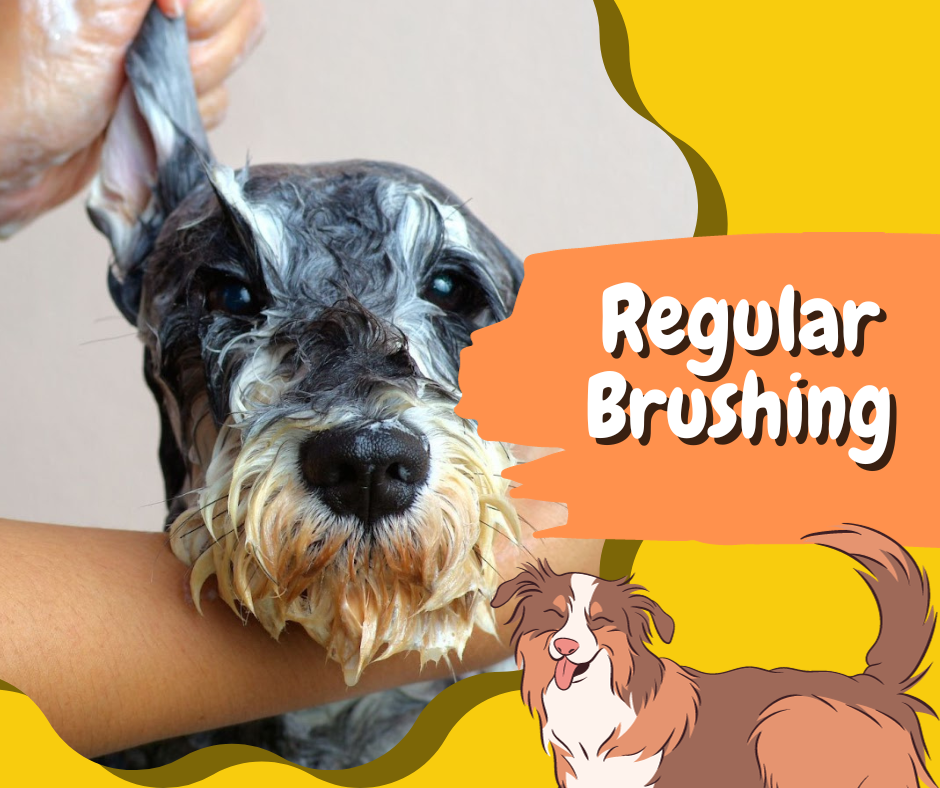
To make brushing a more enjoyable experience for your furry friend, try using a licking mat smeared with peanut butter or wet dog food during the grooming session. This simple trick can create a positive association with brushing and help keep your pup calm and relaxed while you work on their coat.
Addressing Seasonal Shedding and Matting
Seasonal shedding can primarily cause matting in your dog’s coat. The loose fur can become tangled and matted as your dog sheds winter or summer coats. Regular brushing and grooming during shedding seasons are vital to maintaining your dog’s healthy, mat-free coat. This helps remove the loose hair and prevents it from becoming knotted.
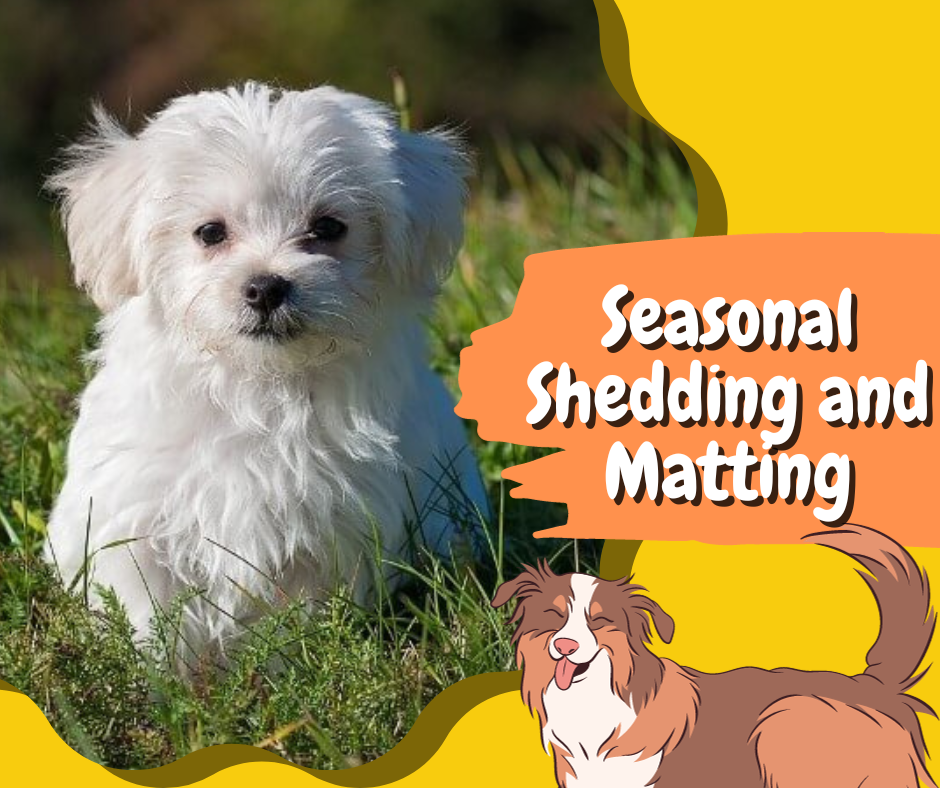
Using a detangling spray can also be helpful during shedding season, making knots and mats easier to brush out. By staying on top of your dog’s grooming needs during seasonal shedding periods, you can minimize the risk of matting and keep their coat looking and feeling its best.
This is a video demonstrating how to brush out a matted dog. We show some tips and techniques to brush out matt on the legs and feet of a small dog.
Video Credit: @tlcdoggrooming
Activities That Can Cause Matting
Certain activities can contribute to matting in your dog’s fur, such as:
- swimming
- shedding
- movement
- exposure to dirt and weeds
When dogs get wet, their hair curls up, making it more prone to matting. Regular brushing and grooming can help prevent matting caused by these activities and keep your dog’s coat tangle-free.

Playing in the snow during winter can also cause your dog’s hair to become wet and matted. To avoid this issue, brush and groom your dog regularly, particularly during the colder months. Maintaining a proactive approach towards your pup’s grooming routine can help mitigate matting caused by different activities.
Professional Grooming: When to Seek Help
Sometimes, despite our best efforts, matted fur can become too challenging to manage at home. In such instances, knowing when to seek help from a professional groomer is crucial. A skilled groomer can safely remove matted fur and provide advice on haircuts and coat care to keep your dog’s fur silky and tangle-free.
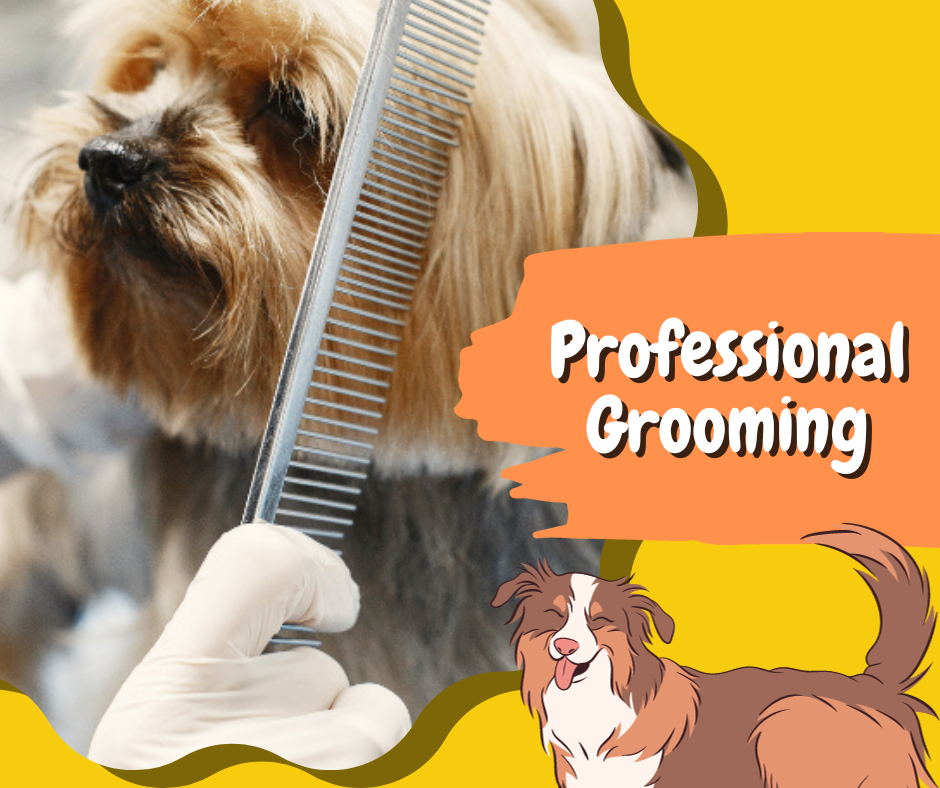
When choosing a professional groomer, consider their experience, grooming preferences, and the services they offer. Regular grooming appointments, especially for high-maintenance coat types, can help prevent matting and keep your dog’s coat healthy and comfortable. When needed, Consulting a professional groomer can save you and your dog from the pain and discomfort of severe matting.
Home Remedies for Removing Mats
You can try some effective home remedies if you’re looking for alternative methods to deal with matted fur at home. Cornstarch and coconut oil can help loosen mats and make them easier to brush. However, be cautious when using these remedies, as risks include nicks and abrasions during the detangling process and the potential for skin irritation or infection.
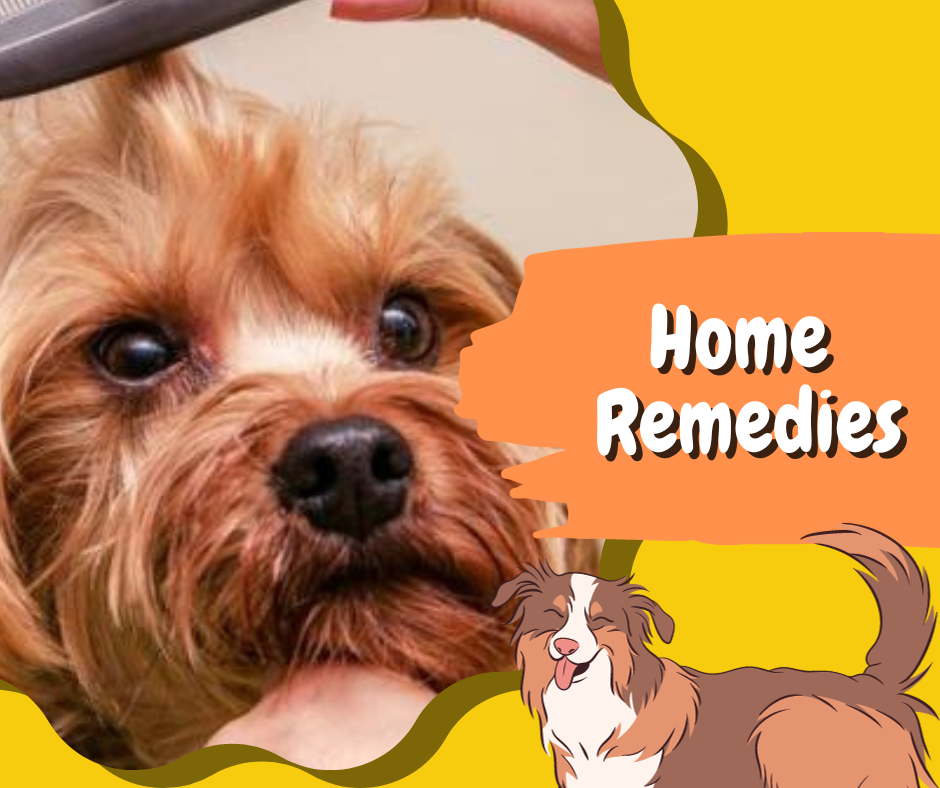
Always be gentle and patient with your pup when removing mats at home. Prioritizing their comfort and safety during the process is of utmost importance. If the matting is too severe or painful for your dog, don’t hesitate to seek help from a professional groomer.
Preventative Measures for Avoiding Matting
Preventing matting in your dog’s coat is much easier than dealing with the consequences of matted fur. Regular grooming, trimming, and using a suitable collar can help keep your dog’s coat short and tangle-free, reducing the risk of matting. Moreover, ensuring a clean and parasite-free environment is crucial to prevent skin issues that may lead to matting.
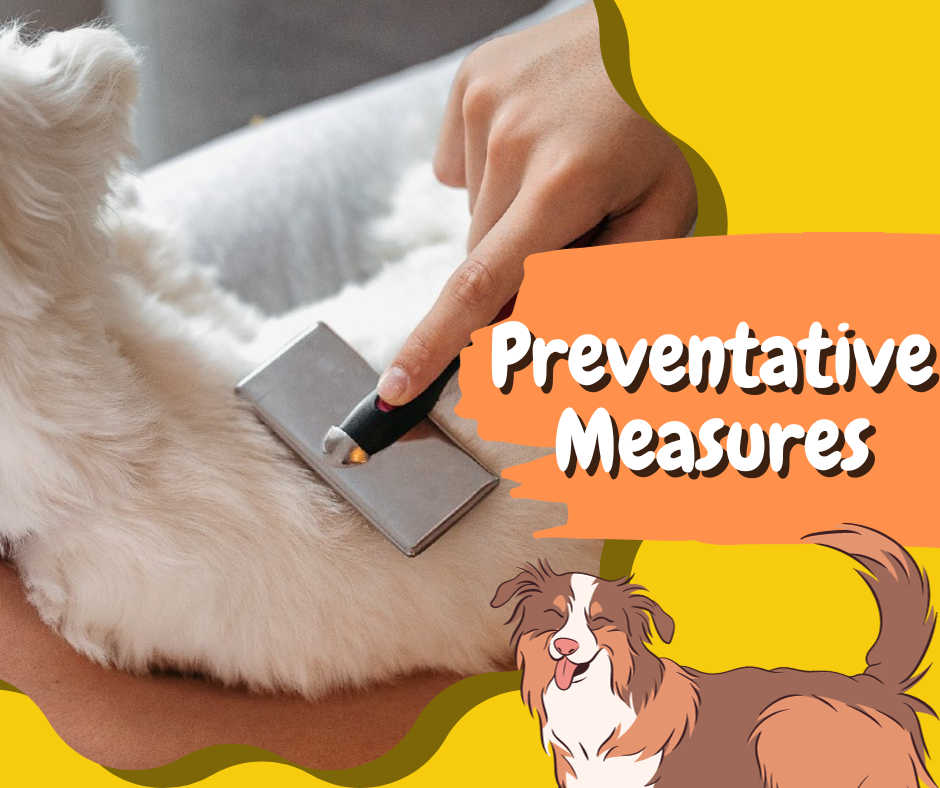
Feeding your dog a balanced and nutritious diet, limiting the number of baths, and using a moisturizing shampoo can also contribute to a healthy, mat-free coat. By proactively approaching your dog’s grooming needs and overall health, you can keep their coat looking and feeling its best while preventing painful mats.
Caring for Your Dog’s Skin and Coat
A healthy coat and skin are essential for your dog’s comfort and well-being. Appropriate care and maintenance can aid in warding off matting and other skin issues, thereby keeping your pup at its best. Regular grooming, using the right tools and products, and addressing skin issues promptly can significantly improve your dog’s coat and skin health.
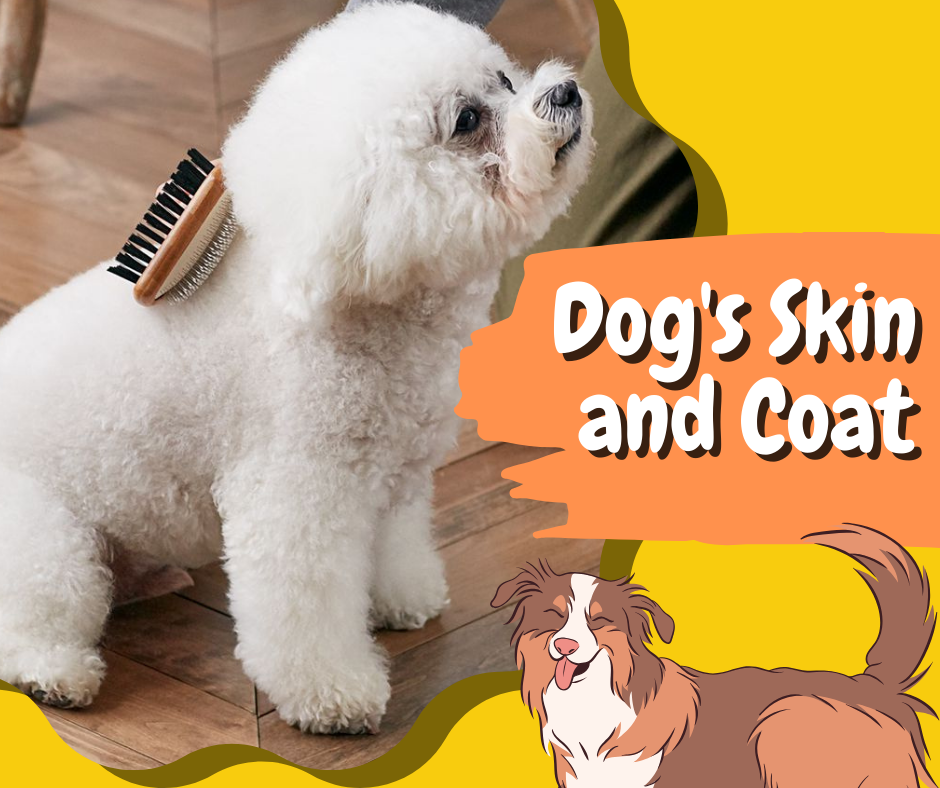
Alongside grooming, ensuring a balanced and nutritious diet, access to fresh water, and protection from excessive sun exposure are key elements in keeping your dog’s healthy skin and coat. By prioritizing your dog’s skin and coat care, you can prevent matting and other issues, ensuring your furry friend’s happy, healthy, and comfortable life.
Unlock the Secret to a Tangle-Free, Gorgeous Coat – Say Goodbye to Matted Dog Hair!
We’ve explored the causes and consequences of matted dog hair and the tools and techniques for effectively removing mats and preventing them in the future. From understanding high-risk breeds to learning about detangling sprays and clippers, we’ve covered everything you need to know to keep your dog’s coat looking fabulous and mat-free.
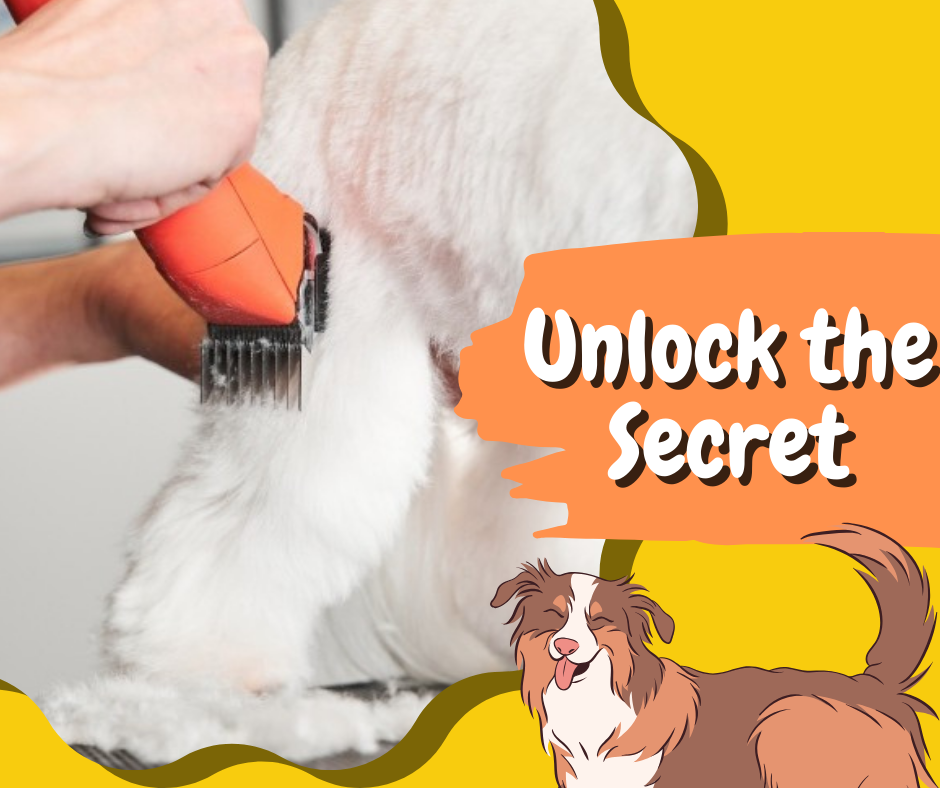
Remember, prevention is always better than cure. By staying proactive with your dog’s grooming routine and caring for their skin and coat, you can prevent painful matting and ensure your beloved pup’s happy, healthy life. So grab that brush and start your journey to a tangle-free, comfortable coat for your furry friend!
FAQs
How do you fix matted dog hair?
To fix matted dog hair, use a detangling spray and slicker brush to break up the mats, then run a comb through the hair to ensure all mats have been removed. For more rigid mats, use a mat-removing tool to strip out the mat, starting at the outer edge. Professional grooming may also be necessary for severe cases.
Is matted fur painful for dogs?
Matted fur can be painful for dogs, leading to health issues like infections and skin irritations. Mats also trap moisture, which can cause irritation and sores on your dog’s skin.
What causes dog matting?
Knots and matting occur when dirt, weeds, or sticky substances are left on a dog’s coat or when there is a lack of brushing or bathing. These are the most common causes of dog matting.
What do groomers do when a dog is matted?
Groomers will typically try to brush out matted fur; however, if the mats are too tight or the skin too sensitive, they may need to resort to a spot shave with electric clippers and a safe blade. Removing these mats quickly is essential, as severe pelting can’t be brushed out.
How often should I brush my dog to prevent matting?
To prevent matting, brushing your dog at least every couple of weeks (or more often if they have a longer coat) is recommended.
? Connect with Life With My Dogs and Unleash the Fun!
Are you a fellow dog lover? Don’t miss out on the tail-wagging adventures, heartwarming moments, and expert tips we share at LifeWithMyDogs.com. Join our pack and stay in the loop by following us on our social media platforms:
- Facebook: FOLLOW US for daily doses of canine cuteness and exciting updates.
- Instagram: Check out our adorable furballs on Instagram and be part of our pawsitive community.
- Pinterest: Explore dog-friendly DIYs, training hacks, and more on Pinterest – your one-stop source for dog-related things.
- Twitter: Stay updated with the latest dog news and trends on Twitter. We love to interact with our followers!
Don’t let the fun pass you by! Follow us on your favorite platform, and together, we’ll celebrate the joy of life with our furry friends. ?


